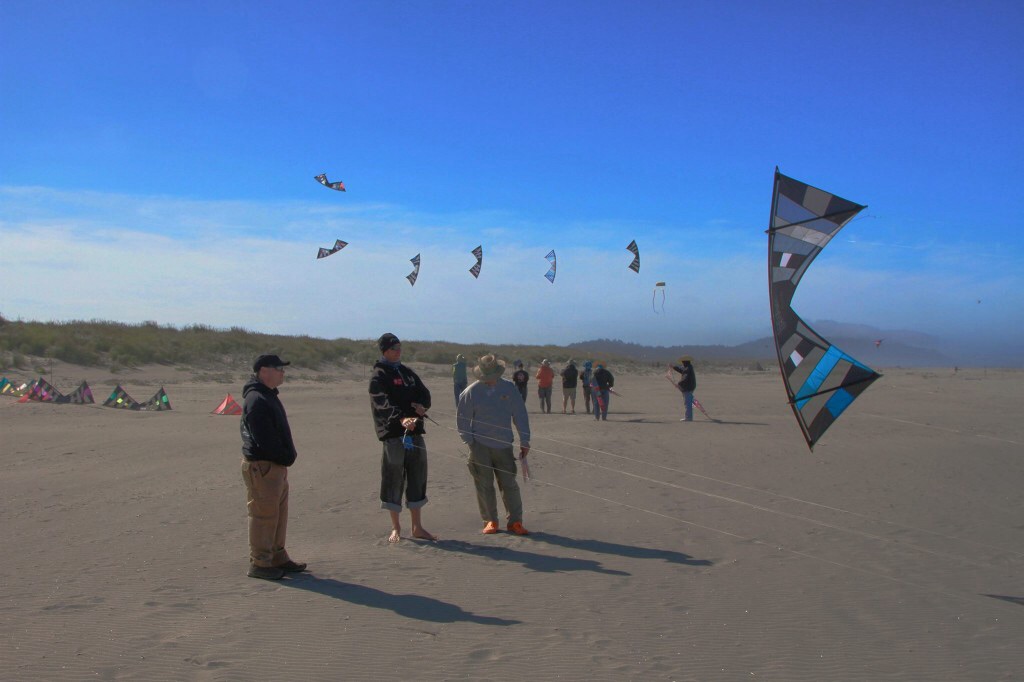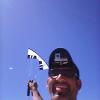-
Posts
13,590 -
Joined
-
Last visited
-
Days Won
336
Content Type
Profiles
Forums
Gallery
Events
Downloads
KL Shop
Blogs
Articles
Classifieds
Community Map
Blog Comments posted by John Barresi
-
-
Great write up, thanks Joanna!

-
You'll also notice that I use a lot of "sway", sharp leans forward and back from the hips supplemented by 1-3 dash steps forward or back in order to stay behind my hands (i.e. keeping hands in front of me).

-
 1
1
-
-
Here's a long-ish video of my bodywork from 2007...
My style has evolved since then, but you can still see how my form isn't far off a boxer's, that's where all the control and power is... When in doubt, ask yourself if you could (a) defend your face, (b) throw a punch or (c) work with fine tools wherever your hands are spending most of their time - again, power and control.

-
 1
1
-
-
Okay, please remember that there is no right or wrong way to fly as long as it's safe and feels good - we're just talking shop here... Also, I do see you implementing some of the following but it's always good to discuss in case some of it isn't being done consciously.

Food for thought after watching the first 6 seconds...
Right now, I get the sense that you often fly the "whole kite" or the "wings"... Simply for perspective, try flying only the center panel, it may help bring your focus / steering points closer to where the power is generated (just right and left of the center panel)... Also when flying from "points A to B", try focusing on the logo and steering it straight on toward where you want to go - this might help alleviate the partially sideways or "leaning over" angle of the kite while flying a straight line.
You also won't need to pull the upper wing back as much when flying a straight path, using natural flight power instead of "floating" your way across... It's a small margin, but when you find it, ohhhh it feels solid.
This is the difference between semi-gliding (sail leaning off wind) and driving (flat of the sail toward wind), you should be able to pick up on what I'm talking about after reviewing a few random "pro" vs "recreational" videos.
Floating is a good skill too, but it might be worthwhile to build familiarity between float and drive styles, even in lighter wind.
Forms, or "katas"...
This is something I've really brought into my teaching material just in the past year - an analogy to Japanese martial arts, where "katas" are used - basically each kata is a different body (and arm) position suited to a particular task.
First rule to this, get your right and left thumbs to be relational... When you do something, finish by returning your thumbs back into a 6"-10" distance from one another as opposed to leaving the two hands operating "independently".
The idea is sort of like a fighter's stance... Hands in front of torso, semi-defense, ready to jab... This leaves the thumbs closer, pinkies (bottom of handles) slightly flayed out to the sides, basically forming an "A" shape with the two handles... When the kite is inverted, use the same technique with a slightly wider spread on the pinkies.
Test material #1 - fly around, stop in an upright hover and set the normal "A" stance, hands near chest.
Test material #2 - fly around, stop in an inverted hover and set the wider "A" stance, hands about 6" lower than usual.
Doing this and setting the stance right away, should only leave you with a small amount of "in the moment" adjustment for the right lift and position of the kite.
You can also apply this to sideways facing hovers... Get a good hover, find out what your "kata" or body form for that hover is... Fly around, arrive at the hover and simultaneously set your kata... Same deal by doing this, you should only have a small percentage of adjustment left to make having already set the fundamental form.
Also, developing clear kata forms will help keep your handles from tangling up as often (like the last clip), happens to me too from time to time.
That's it for now... And bear in mind - you already fly well, all just food for thought - see what tastes good.

-
 2
2
-
-
*makes popcorn*
-
 1
1
-
-
Make sure both body work and kite are shown a lot.

-
 1
1
-
-
Looking forward to it.

-
No other suggestions based on those videos, but if I got a look at another 2-3 minute video with a variety of what you can do with a Rev, I could likely (and would) offer more feedback.

-
 1
1
-
-
Awesome.

-
 1
1
-
-
Funky. Thanks Rob, I always love your flying.

-
 2
2
-
-
YES
-
Shadow flying? Kite up and eyes down?

-
 1
1
-
-
I do lots of axel-stall-axel-cascade-stall-halfaxel-stall, etc... Fun, good stuff.

-
 1
1
-
-
That's right - roughly like this:
\ /
|
/ \Of course, the "X" portion is at more equal angles than I've crudely made with ascii above.

-
Looking really good!

The only tip I have to offer is a subtle one...
While flying, try keeping your shoulders more directly above your hips, or just an inch behind them.
As we learn, there is often a subtle "lean into it" tell in the body language that creates tension in the upper arms, shoulders and lower back... The fix might be described as almost imperceptible "gangsta lean" away from the kite, very slight shift in center of gravity.
Granted, I am an old kite tweaker, might just be a kite mania induced ramble - dismiss at will.

-
You can also beat it to death (practice-wise) by repeating that axel-stall-pause-axel-stall-pause sequence and playing with the float or inertia of the stall.

-
 1
1
-
-
@Penny Lingenfelter's 4-line handle is a straightforward "X" formation, if I remember right - no normal handles incorporated... Maybe she'll see that tag and come tell us for sure.

-
I would suggest posting it in Kite Making, linking photos added to the gallery.

-
 1
1
-
-
46 minutes ago, stapp59 said:
Recently have been thinking a bit about quads, who knew?
I saw a photo of one of your quad builds somewhere recently, gorgeous match with your Enigma...
Post it around here somewhere, folks would likely enjoy it.

-
11 hours ago, RobB said:
Oh, sorry about that... old school forum etiquette.

I appreciate the thought, but KL is all for supporting boutique kite makers - I only wrinkle my nose when shops that don't support KL get plugged, but even then I don't usually drop the hammer.

-
 1
1
-
-
"Other site"...
Link should be alright?
-
@stapp59 makes a hell of a kite.

-
 1
1
-
-
I love it.

-
I never looked at the climb, I just do what I love to do and find myself in new places.

-
 2
2
-






childs play
in FrankieFlyin Rev Videos
A blog by Frankieflyin in General
Posted
Your one-handed flying is getting pretty good Frankie, nice job.